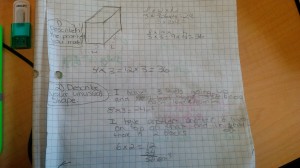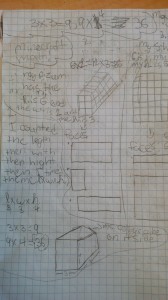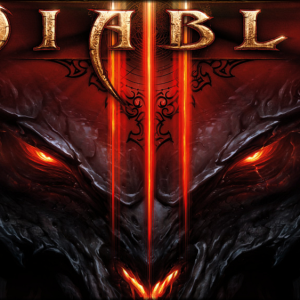Measurement and Merriment
Last week I made reference to a math lesson that inspired a 40 minute conversation about skins in Minecraft. It was a lesson that came at the end of our Measurement unit on volume and capacity. I am not going to lie to you; I was running out of time, and I needed to cover the expectation about calculating the volume of a rectangular prism you know the one:
“determine, through investigation using stacked congruent rectangular layers of concrete materials, the relationship between the height, the area of the base, and the volume of a rectangular prism, and generalize to develop the formula (i.e., Volume = area of base x height)…”
~page 81 Ontario Curriculum 1-8 Mathematics
Sure, I could have walked across to the other side of the school to the math cupboard and looked for linking cube, or the equivalent manipulative. But to be quite frank, I was pretty sure that I would have a bit of a hunt on my hands, and as I said before, not much time. So I decided to explore this concept with my students in Minecraft instead.
Just outside of our ‘home base’ I created an island out of sand. On that island I left a rectangular prism. Before leading the girls to the island, I gave them the task below, and discussed what they already knew about volume, capacity and finding the area of a two dimensional figure. I recorded their thinking on the board for them to refer to.
The Task:
- Figure out the volume of the rectangular prism on the island.
- Create a prism with the same volume, but different dimensions.
- Create a ‘free style’ shape with the same volume.
- Record your work in your Math notebook with drawing and numbers.
- Justify your answer.
I was pretty sure this lesson was going to fall flat and just be a lame attempt at making Math fun, or as Liam might say: putting chocolate on broccoli, but my students bought into it. It took us 2 periods to investigate, build and report what we discovered, and most students were able to complete the task. I did have moments where I had to redirect students back to the task, and I did turn off many of MinecraftEdu features (e.g. spawning animals) but overall student were engaged, and having fun completing a math problem. One student even named the island something along the lines of “Super Fun Math Island” (I can’t remember the actual title, and I don’t have access to the server right now). Some students labeled their structures in game, while others saved their labels for their notebooks. It was interesting to see the variety of ‘free style’ builds students had created. A few even revisited their work during club time to add finishing touches.


“Soft Skills”
Other student learning that came out from the activity, (besides the gender and skin discussion) was: how to negotiate ‘ownership’ in shared public spaces. Students discussed, and sometimes argued over areas to build in. Some students took time to create more area to work in, while others looked for the farthest corner to work away from the class from the very beginning. It was interesting to watch and to listen to the discussions. I was also happy to note that students were able to resolve their conflicts without calling me in to mediate. It was also fascinating to see how some students marked their area; some through fences, some through walls of glass, while others had not visible borders at all. Student were able to represent their Mathematical thinking is different ways, and solved their public space issues in a variety of ways too. Looking back I could have used this as a moment to connect flexible thinking in math to problem solving ‘in real life.’


Leave a Reply